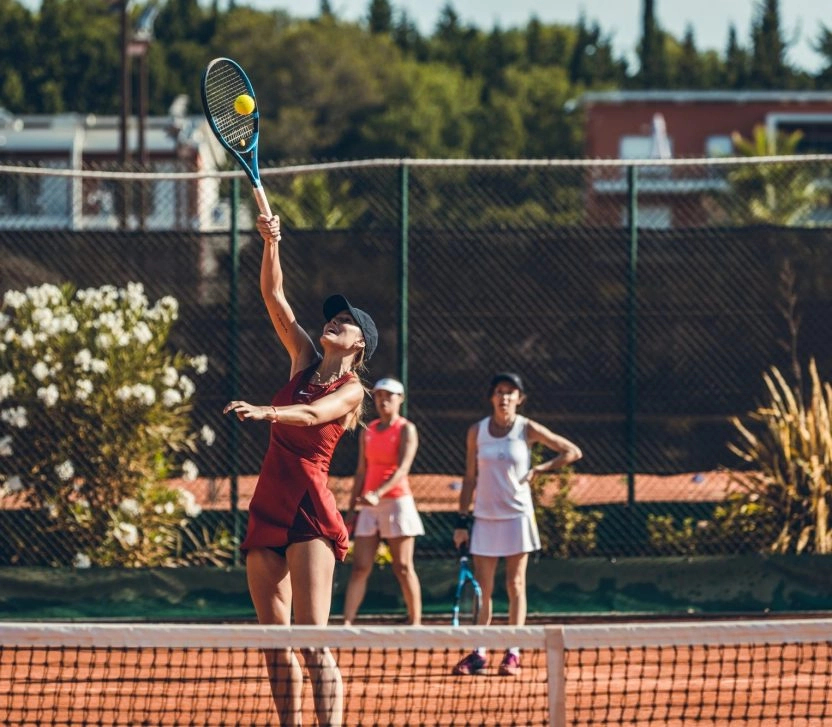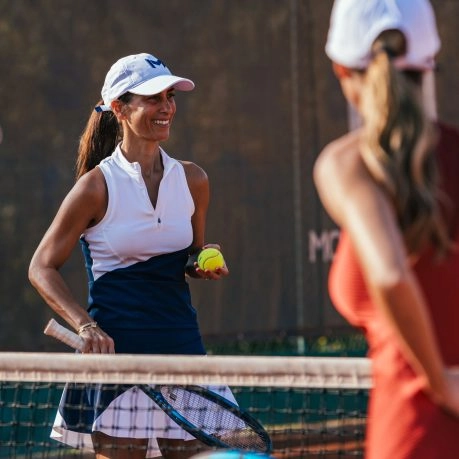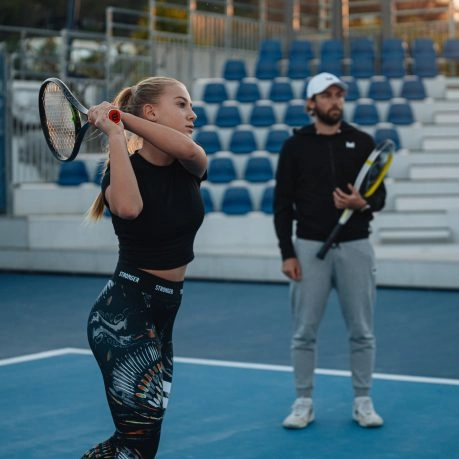All these elements will undoubtedly help you to better understand your ball exchanges and significantly increase your chances of a successful smash. However, for a really successful smash, there’s one last vital element to take into account: your body positioning. This is the element that always comes first during a tennis clinic, because poor posture can ruin a well-executed shot.
Most smashes are played close to the net, so you need to be in a posture that allows you to react immediately when the ball comes back towards you.
To do this, we advise you to get into an armed position by holding your racket in front of you, at chest height. Ideally, you should stand in profile with your shoulders at right angles to the net, as this will give you more power for the shot. If you are right-handed, your support will be concentrated on your right leg, which will always remain bent to increase the power of your smash even more. If you’re left-handed, it’s obviously your left leg.
Don’t be discouraged if you don’t manage a smash in your first match, it’s a highly technical movement that requires you to think about several things at once while concentrating on the goal. It’s by practising and trying several times that you’ll eventually become familiar with the movement and be able to hit these shots more easily.
If, despite all this advice, you’re still finding it difficult to hit this type of shot or any other technical move, don’t hesitate to sign up for a tennis course like the ones we offer. Our professional coaches will take the time to show you how to correct your posture or improve your strokes to make it easier for you to succeed with all the technical strokes you want to perform, whether it’s a smash or any other. Our clinics are open to everyone, and we also offer youth tennis clinics, organised over half a day or during the school holidays, to introduce younger players to this rewarding sport. These young people’s courses can also be multi-sport, depending on the package chosen, giving your children the chance to discover several sports and then choose the one they prefer.




















